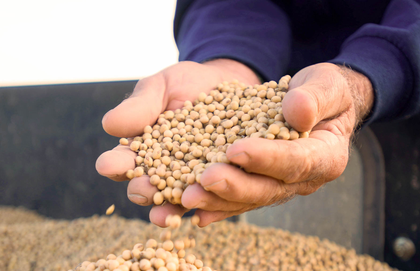American farmers face tariff ripples on costs, market shifts: Reports
By IANS | Updated: October 22, 2025 19:55 IST2025-10-22T19:52:22+5:302025-10-22T19:55:06+5:30
New Delhi, Oct 22 After Washington imposed steep tariffs on trade partners, American farmers are facing several constraints, ...

American farmers face tariff ripples on costs, market shifts: Reports
New Delhi, Oct 22 After Washington imposed steep tariffs on trade partners, American farmers are facing several constraints, including increased costs, shifting markets, and mixed impacts on different agricultural sectors.
"The long-term consequences of trade wars on US agriculture remain concerning, as shown by how China permanently shifted soybean imports from the US to Brazil following the previous trade war, despite temporary government assistance to affected farmers," predicted a report published in April this year by the public policy think tank American Enterprise Institute.
In his first term as the United States President, Donald Trump had initiated almost similar protectionist trade measures, which led to trading partners slapping retaliatory tariffs.
Once again, China has decided not to buy US produce like soybean, American corn, etc.
In 2024, Beijing purchased almost half of America’s soybean exports. Now, it is sourcing its requirements from other nations like Brazil and India.
For American corn, while China bought products worth $5.2 billion in 2022, the value fell to about $331 million in 2024.
Overall, US corn exports fell from $18.57 billion to $13.7 billion in this period, said trade reports.
The situation remains almost similar for other crops as well.
While demands in key markets are shrinking, production costs are rising. Though the United States Department of Agriculture (USDA) has allocated $10 billion under the Emergency Commodity Assistance Program, farmers continue to face uncertainty.
According to reports, the US agricultural trade deficit reached $28.6 billion in the first half of 2025, indicating a significant imbalance in its trade.
Meanwhile, prices of machinery have been increasing through the years, labour has become expensive, and the unpredictable weather has been affecting crop yield.
Unlike in India, American farmers do not benefit from subsidies on fertiliser, electricity, or water. Also, they do not get government support in buying their crop and storing it, as do their Indian counterparts.
Thus, apart from penalising India for buying Russian oil, Washington is putting pressure on New Delhi to open its agriculture sector to American farmers in the bilateral trade negotiations.
India protects its farmers against foreign agricultural products, despite international pressures, for a number of reasons that include economic, social, and strategic issues. New Delhi’s stance is not anti-trade; it is pro-farmer.
Around 50 per cent of the country’s workforce is engaged in agriculture, where about 89 per cent are classified as marginal and small – owning less than 2 hectares of land. This vast majority lacks the scale, technology, and subsidies that foreign producers possess. Thus, opening the market to cheap imports will hit them hard, cutting their income from large-scale foreign producers.
Therefore, India maintains moderate-to-high tariffs on agricultural imports to shield domestic farmers from subsidised foreign goods. Such tariffs are adjusted based on crop cycles, global prices, and domestic supply.
Now, through a bilateral trade agreement, the United States intends to target India’s market for specific crops and agricultural products like soybean, American corn (maize), cotton, dairy and processed foods, among others.
Disclaimer: This post has been auto-published from an agency feed without any modifications to the text and has not been reviewed by an editor
Open in app